 Despite the frosty temperature and the stiff northerly wind, zealous parents, some wrapped in blankets, are scattered in the bleachers, bellowing out time-honored lines of banter like, “be a hitter now,” or “keep your eye on it, drive it,” at the pace of an auctioneer. Intermittently, they shout coordinated cheers where one parent calls out, “everybody hits,” and the other parents answer in unison, “everybody scores.” A tall, thin kid with shaggy blond hair steps to the plate, to a chorus of “Let’s go now, Thumper.” Trey Ewing acknowledges the yells with an exuberant smile. Whether he’s playing outfielder, first base, or on the mound, Trey is an outgoing leader on the team. He hits the first pitch for a lead-off single, and eventually comes around to score.
Despite the frosty temperature and the stiff northerly wind, zealous parents, some wrapped in blankets, are scattered in the bleachers, bellowing out time-honored lines of banter like, “be a hitter now,” or “keep your eye on it, drive it,” at the pace of an auctioneer. Intermittently, they shout coordinated cheers where one parent calls out, “everybody hits,” and the other parents answer in unison, “everybody scores.” A tall, thin kid with shaggy blond hair steps to the plate, to a chorus of “Let’s go now, Thumper.” Trey Ewing acknowledges the yells with an exuberant smile. Whether he’s playing outfielder, first base, or on the mound, Trey is an outgoing leader on the team. He hits the first pitch for a lead-off single, and eventually comes around to score.
His swing looks as effortless as his enthusiasm, though the former took a lot more work to achieve. Trey, like generations of players before him, has spent countless hours in his backyard practicing that swing. Unlike most of those earlier generations — but like many of his teammates — Trey has also honed that swing and his other baseball skills in dozens of lessons with private instructors, dating back four years. He’s been going to baseball skills camps since he was 9 years old. And as far as baseball goes, he’s not just one of the boys of summer: Trey and his teammates play highly competitive baseball for up to 10 months of the year. Similar scenes play out at three other fields at Mike Lewis Park in Grand Prairie, running on throughout this March day. At each of the neatly groomed diamonds, enclosed by chain-link fences and flanked by metal bleachers, the frequent clink of the aluminum bats is followed predictably by screams and cheers that reverberate throughout the complex. To the untrained eye, the sight looks pretty common — it’s Little League baseball, right?
However, upon closer examination, these kids are anything but common. They are part of a growing youth sports phenomenon called select league sports. Here, players have to try out to be on the teams, and baseball is not a summer game for any kid with a glove, but an intense, high-dollar, lily-white world. “Select” is as far from ordinary Little League, where just anyone can sign up and play left field, as a pickup basketball game at the park is from the NBA. While most kids their age are spending their free time chatting with friends, rolling their eyes at their parents, and frustrating mall security, these little sluggers have committed themselves and their parents to a never-ending baseball gauntlet. The balancing act that many parents perform, getting kids to various sports events, dance recitals, and club meetings probably seems laughable to the Tiger parents. Select league families travel at a pace that would rival that of any circus, with teams often committed to tournaments in different counties, even different states, in the same week.
For these kids and their parents, baseball is no longer just a fun way to pass the summers between elementary school and college. It’s a lifestyle — almost a job — complete with its own ethics and vernacular and frequently with well-paid coaches, private lessons for players, and the biggest lesson of all: that youth baseball has become big business. Baseball is supposed to be America’s pastime, and at any sandlot you’ll find dads living vicariously through their kids and moms whose pride in their offspring borders on worship. But in the select leagues, the mantra is that more money, more lessons, more dedication, more games, more practice will pay for itself someday in college scholarships or a major-league contract. And there’s no denying that happens. The coach who, for most purposes, started select league baseball in North Texas has seen dozens of his players go on to the pro’s. Major-league recruiters are looking at select leagues more and more. Scouting in the U.S. is starting to resemble Latin America, where players are signed to big- league contracts practically out of the womb and hidden away until they’re old enough to play over here. ESPN is even televising Little League games. The select leagues are a juggernaut that continues to gain momentum and attention.
But critics — and there are plenty — charge that this kind of baseball, with months of traveling each year, multiple games almost every week, and an intense pressure to win, in fact is putting many kids at physical risk, jeopardizing their potential as adult ballplayers or athletes of any kind. They also point out that the costs of playing on such teams is so prohibitive that low-income families are shut out, and that many of the families that participate can do so only by having parents take on second jobs and by jeopardizing normal family time and attention that would otherwise be given to other kids. Some parents acknowledge that coaches and select-league officials may be exploiting their kids’ and their own hopes and dreams, pushing for them to pay for another private lesson, the newest bat, professional-looking uniforms, and instructional camps, all to keep their children from being left behind in the Great Baseball Race. Each year organizers tout hundreds of “national championship” events, increasing the pressure on the kids — and income for the organizers of what is fast becoming a new sports industry.
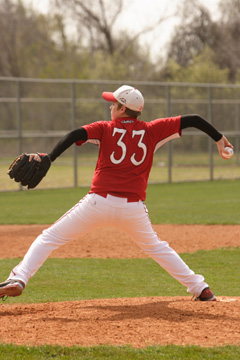 Virtually every sport in the United States has something akin to select leagues. But baseball holds a unique place in the pantheon of Americana, and right now, at all levels, the sport is in crisis. The clichéd poetics of Ken Burns have given way, in the major leagues, to strikes, salary arbitration, stadium taxes, and controversies surrounding steroids and other performance-enhancing drugs — and the drug problems have filtered down to the high school and college ranks. State Sen. Kyle Janek of Houston has introduced a bill in the Texas Legislature that would require high school athletes to be randomly tested for steroids. In the modern age, senators, pharmacists, and agents have become just as much a part of the game as batboys and hotdog barkers. Youth baseball and big business is certainly not a new combination. Baseball camps and personal instructors have been around for decades. Select leagues themselves date back to the mid-’80s in the Metroplex, when Sam Carpenter of Dallas started putting together all-star teams that won countless titles. In the years since, he has sent some 61 players to the professional level, including 25 who made it to the major leagues. By the mid-’90s, dozens of select leagues were flourishing in the area. Before then, most youth teams were coached by dads working for free. Nowadays, paid coaches such as Carpenter are becoming the norm.
Virtually every sport in the United States has something akin to select leagues. But baseball holds a unique place in the pantheon of Americana, and right now, at all levels, the sport is in crisis. The clichéd poetics of Ken Burns have given way, in the major leagues, to strikes, salary arbitration, stadium taxes, and controversies surrounding steroids and other performance-enhancing drugs — and the drug problems have filtered down to the high school and college ranks. State Sen. Kyle Janek of Houston has introduced a bill in the Texas Legislature that would require high school athletes to be randomly tested for steroids. In the modern age, senators, pharmacists, and agents have become just as much a part of the game as batboys and hotdog barkers. Youth baseball and big business is certainly not a new combination. Baseball camps and personal instructors have been around for decades. Select leagues themselves date back to the mid-’80s in the Metroplex, when Sam Carpenter of Dallas started putting together all-star teams that won countless titles. In the years since, he has sent some 61 players to the professional level, including 25 who made it to the major leagues. By the mid-’90s, dozens of select leagues were flourishing in the area. Before then, most youth teams were coached by dads working for free. Nowadays, paid coaches such as Carpenter are becoming the norm.
There are still teams playing summers only with their friends in parks close to home, equipped with hand-me-down gloves, wildly varying skill levels, and a simple joy of the game. On the opposite end is select, where a team recruits from all over the region, parents play endless roles as chauffeur and financier, and the sport is taken very seriously — in some cases, as a career path. A select league’s teams are scattered so widely that just getting to the games and tournaments becomes a struggle for some families. Trey’s mother, Amy Ewing, is a single parent working two jobs, trying to raise two boys in Keller, only one of whom is playing select baseball. She doesn’t like to think about how much she has spent on baseball pursuits during Trey’s four years in select ball, but another parent estimated that the price tag, including travel expenses, is close to $10,000 a year — not including private lessons.
“My biggest frustration is the cost and the time that it takes away from the rest of your family,” she said. “Almost every tournament involves traveling, and it’s on both Saturday and Sunday.” She is also concerned that the time she dedicates to Trey’s baseball pursuits may detract from her other son, Eric, who frequently stays home or waits in the car during his brother’s games. And yet, she believes it’s worthwhile, as an investment in Trey’s future, a path to a college scholarship or the pro’s. “I see it as a sacrifice, but to me it’s just worth it,” she said. “I’ve worked two jobs and maybe wouldn’t have to if I didn’t have to pay for select. We don’t take the vacations that I would like to take [this year] because were taking a trip to Steamboat Springs [for a baseball tournament]. I want to go because it’s an awesome opportunity.”
Trey, a bright and uncommonly conscientious eighth-grader, is not blind to the toll his sport takes on the family. “My mom doesn’t like the cost of driving,” he said. “But they do enjoy coming to watch me.” The basic cost of being a Tiger is about $1,500 a season, which includes tournament fees and three different uniforms. And that’s on the lower end of the select price range — some teams charge up to $3,500. The Tigers play a 70- to 80-game season, closer to 100 for the kids who stay on through the fall. They play two league games during the week and three weekend tournaments a month. The season, with fall ball, lasts up to 10 and a half months. Compare that to the Arlington YMCA league, commonly referred to as recreation, or “rec” league, that costs $90 for a 12-game season that lasts six weeks — or the West Side Lions in Fort Worth, which charges around $120 and has a 20-game schedule.
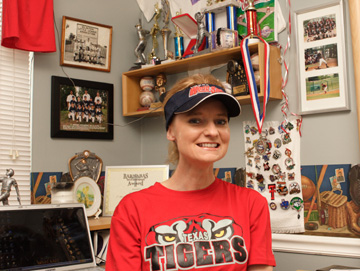 North Texas select teams play in tournaments from Waco to Tulsa. Last season the Tigers, based in Euless, finished second in the American Select League, with a national tournament held in Tulsa, Okla. This year, they’ve moved up a notch in the league-play levels, which heads them toward the Steamboat Springs tournament in July. Parents are responsible for getting their kids there and providing accommodations and meals for an entire week of the playoffs. Many teams try to take some of the financial pressure off parents by holding fund-raising events or finding sponsors. Last year some of the Tigers players worked a shift at a Sonic restaurant to raise money. This year the team tried to get a sponsor but could not. “If you don’t get that sponsorship, it comes out of your pocket,” said Valerie Ballard, whose son Blake “Sunshine” Ballard, from Joshua, is a catcher and pitcher for the Tigers. “Just the trip to Tulsa alone probably cost us $2,000, with eating out, travel, and hotel.”
North Texas select teams play in tournaments from Waco to Tulsa. Last season the Tigers, based in Euless, finished second in the American Select League, with a national tournament held in Tulsa, Okla. This year, they’ve moved up a notch in the league-play levels, which heads them toward the Steamboat Springs tournament in July. Parents are responsible for getting their kids there and providing accommodations and meals for an entire week of the playoffs. Many teams try to take some of the financial pressure off parents by holding fund-raising events or finding sponsors. Last year some of the Tigers players worked a shift at a Sonic restaurant to raise money. This year the team tried to get a sponsor but could not. “If you don’t get that sponsorship, it comes out of your pocket,” said Valerie Ballard, whose son Blake “Sunshine” Ballard, from Joshua, is a catcher and pitcher for the Tigers. “Just the trip to Tulsa alone probably cost us $2,000, with eating out, travel, and hotel.”
Another dent in the bank account comes from the cost of private lessons and camps — which parents say some coaches push more than is necessary. Tiger parents say their current coach, Keith Taylor, has not applied such pressure, although he encourages lessons. But past coaches were different; one mother said other coaches told her in no uncertain terms that if her son didn’t get private lessons, he would not play. Private lessons cost, on average, $60 an hour, and most Tigers players have had some. There are teams, such as the Arlington Heat, that have their own facilities. The team’s home is the 23,000-square-foot Cover All Bases indoor baseball center, complete with six batting cages and several personal instructors. Levi Scott of Granbury, a first baseman and pitcher for the Tigers, has had his share of private lessons. His mother, Gina Scott, said she and her husband believe the lessons are an investment in their son’s future. “He hopes to play professional ball someday or at least college ball,” she said. The family will be moving to Burleson when Levi enters high school, so that he will be in a better school system — and a more competitive baseball program.
Amy Ewing also refers to the extra baseball lessons as an investment. “After all of the time and money that we’ve invested, I think Trey will definitely have an advantage” when it comes to getting athletic scholarships, she said. “Trey is expecting to go into high school and play well, because he has put in so much time.” There’s no guarantee that any scholarship will be forthcoming, of course. “You want to stay grounded, but you think, ‘it’s possible,’” she said. Dr. Kathleen Sullivan Porter, an advisor in the University of Texas at Arlington’s English department, who also teaches a class on baseball literature, believes that a college savings fund would be a better investment than baseball lessons. “Education needs to be the number-one priority,” she said. “With the limited amount of experience that I’ve had hearing pro scouts talk, they will maybe sign one or two kids a year to a contract. The odds are very much against them to move up to the major-league level. From my experience, $10,000 a year would do much better in a college savings fund rather than a select league, unless you just have that kind of money. But at the same time, you should still be setting aside money for a college fund.”
 Carpenter, the iconic coach whose Mustangs of the Lone Star League in Dallas have produced some of the areas most recognizable major-league names, is one of a growing number of professional youth league coaches who give private lessons and believe they make a difference. From his teams have come athletes like Todd Van Poppel, who played for the Oakland Athletics, Chicago Cubs, and Texas Rangers, among others; Ben Grieve, who played for the Athletics and Tampa Bay Devil Rays; and Vernon Wells, who plays for the Toronto Blue Jays. Carpenter maintains that select players have a big advantage going into high school — but nothing that other players can’t overcome. “The basics are still throw it, pitch it, and hit it,” he said. Keith Taylor understands that parents may have high expectations, but maintains that it is his goal to prepare kids for high school baseball — not a potential career: “What we talk to them about all the time is how to get ready for high school ball, and if they progress beyond that, then that’s tremendous.” But, he pointed out, “less than one percent of players from this area make it to the pro’s.” He does agree that select ball gives players a leg up going into high school. “These kids will see better pitching and better play this year than [in] their next two years of high school,” he said. “By the time my older son [who also played select] hit high school, it wasn’t even close to the level of play he saw when he was 13 or 14 years old [in select].”
Carpenter, the iconic coach whose Mustangs of the Lone Star League in Dallas have produced some of the areas most recognizable major-league names, is one of a growing number of professional youth league coaches who give private lessons and believe they make a difference. From his teams have come athletes like Todd Van Poppel, who played for the Oakland Athletics, Chicago Cubs, and Texas Rangers, among others; Ben Grieve, who played for the Athletics and Tampa Bay Devil Rays; and Vernon Wells, who plays for the Toronto Blue Jays. Carpenter maintains that select players have a big advantage going into high school — but nothing that other players can’t overcome. “The basics are still throw it, pitch it, and hit it,” he said. Keith Taylor understands that parents may have high expectations, but maintains that it is his goal to prepare kids for high school baseball — not a potential career: “What we talk to them about all the time is how to get ready for high school ball, and if they progress beyond that, then that’s tremendous.” But, he pointed out, “less than one percent of players from this area make it to the pro’s.” He does agree that select ball gives players a leg up going into high school. “These kids will see better pitching and better play this year than [in] their next two years of high school,” he said. “By the time my older son [who also played select] hit high school, it wasn’t even close to the level of play he saw when he was 13 or 14 years old [in select].”
Not everyone agrees that select baseball is that big of an advantage. Tommy Elliot, boys’ athletic coordinator and renowned baseball coach at Arlington Heights High School, said that the proliferation of select teams has watered down the quality of the competition. “When select first came out, that was exactly what it meant. They only wanted to deal with the best.” But now, he said, some kids from select teams don’t even make the Heights junior varsity. “All select means [now] is, ‘We’ll take your check.’” The coach said playing for a select team doesn’t necessarily mean kids will get worthwhile instruction. “I have a problem with these kids who have played select ball, and their parents have paid all of this money, but there is no correction,” he said. “We have [select] kids that come in, and they have poor technique, or they just haven’t practiced the rudimentary skills required of the game. I’d rather them cut the [amount of] games in half and spend the time on organized practice.” Elliot’s current varsity team features several players who participated in the Little League World Series several years ago, through the West Side Lions, a non-select league; the team is expected to be in the running for a state title this year.
One of the most noticeable features of Texas select is the lack of minorities on most teams. The league tends to be cost-prohibitive for many families, minorities or otherwise, and there is no concerted effort to recruit non-whites. Some teams offer scholarships to players whose parents cannot afford the cost. Of five teams contacted by Fort Worth Weekly, only one offered a formal, annual scholarship, although other coaches said that they would find a way to get a kid from a low-income family on the team — if it ever comes up. Another coach said informal help is available, but just not advertised. Some parents acknowledge the income discrepancy. “There are probably kids out there that play pretty good ball [whose parents] don’t have the funds [to afford select].” Ballard said. But other parents believe that despite the cost, the league is still accessible to all kinds of families. “It’s not just a bunch of rich kids,” Ewing said. “There are also other single parents.”
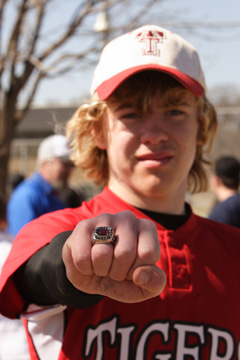 Select-league coaches don’t just choose their players from the group that shows up for tryouts. They spend a lot of time recruiting all over the place — which means that the kids on a team can come from all over the place — or that families move in order to make it possible for their kids to play on the right team. Taylor, whose son Colton has been on the Tigers since he was five years old, is a throwback of sorts. He volunteers as the team’s coach, spending 25 to 30 hours a week on baseball. He is also fortunate in that his team has retained some of its players for many years, but he still does his fair share of recruiting. “We go anywhere in the area where kids are looking to play top-flight ball,” he said. “We have kids from Granbury all the way to Keller. I’ve had this team since they were five years old.” Sunshine Ballard found the Tigers after feeling stagnant in his hometown league. “We started off playing ball in Joshua, and Blake progressed faster than the boys around him,” said his mother. “We left Joshua one night, and he said ‘I’m never going to play ball in Joshua again, I’m so tired of losing.’ Blake had progressed to a level where it wasn’t enough to just play and have fun. He played with a desire to win. His heart was on fire for baseball.”
Select-league coaches don’t just choose their players from the group that shows up for tryouts. They spend a lot of time recruiting all over the place — which means that the kids on a team can come from all over the place — or that families move in order to make it possible for their kids to play on the right team. Taylor, whose son Colton has been on the Tigers since he was five years old, is a throwback of sorts. He volunteers as the team’s coach, spending 25 to 30 hours a week on baseball. He is also fortunate in that his team has retained some of its players for many years, but he still does his fair share of recruiting. “We go anywhere in the area where kids are looking to play top-flight ball,” he said. “We have kids from Granbury all the way to Keller. I’ve had this team since they were five years old.” Sunshine Ballard found the Tigers after feeling stagnant in his hometown league. “We started off playing ball in Joshua, and Blake progressed faster than the boys around him,” said his mother. “We left Joshua one night, and he said ‘I’m never going to play ball in Joshua again, I’m so tired of losing.’ Blake had progressed to a level where it wasn’t enough to just play and have fun. He played with a desire to win. His heart was on fire for baseball.”
One tool that teams use in recruiting is the number of championships they have won. But here, too, dilution has set in — thanks to a growing number of organizations offering allegedly national titles. One youth baseball official estimated that more than 25 organizations will crown a national champ this year. Most organizations hold championship tournaments in eight age groups, with up to three divisions for each group. Texas Select, for example, is divided into Minor, American, and National, all based on ability. The Tigers’ second-place finish in the American division last year meant they moved up to the National division, this year — a higher level of play and potential costs. The proliferation of championships has rung the cash register for the leagues. The Arizona-based Super Series, for example, hosted 50 national championships and up to 800 qualifying tournaments last year. Company president Mark Mathew estimates that the Series brought in revenue of about $350 million. Cities hoping to lure those dollars are scrambling to upgrade their baseball facilities. Tournament organizers offer souvenirs like championship rings for $200 per person or more — a pretty penny for a souvenir that may not even fit the kid after his next growth spurt.
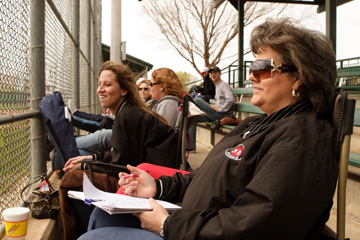 When Trey Ewing was 10 years old, he had to get physical therapy because a coach was wearing out his arm in the pursuit of wins. “My coach overdid me on curveballs,” he said. “They wanted me to snap my wrist, which would make it [the pitch] drop more and faster, but it’s not good for a 9-year-old to do that.” He trusted his coach, believing that to do otherwise would have let his team down. Unfortunately, Trey’s case is all too common among select league players and in similar high-level youth sports. Many experts believe that it’s dangerous for kids to specialize in one sport at too young an age, leading to burnout or even lasting physical damage. Stephen Keener, president and CEO of Little League Baseball and Softball, wrote in a column on the Little League Online web site that the goal of youth baseball should be to have fun, not to groom kids for higher levels of competition.
When Trey Ewing was 10 years old, he had to get physical therapy because a coach was wearing out his arm in the pursuit of wins. “My coach overdid me on curveballs,” he said. “They wanted me to snap my wrist, which would make it [the pitch] drop more and faster, but it’s not good for a 9-year-old to do that.” He trusted his coach, believing that to do otherwise would have let his team down. Unfortunately, Trey’s case is all too common among select league players and in similar high-level youth sports. Many experts believe that it’s dangerous for kids to specialize in one sport at too young an age, leading to burnout or even lasting physical damage. Stephen Keener, president and CEO of Little League Baseball and Softball, wrote in a column on the Little League Online web site that the goal of youth baseball should be to have fun, not to groom kids for higher levels of competition.
“Regrettably, there is a cross-section of society that seems aimed at profit and self-satisfaction that is fed by a twisted sense of commitment to children,” he wrote. “For the parents who each year spend hundreds of hours traveling to ‘elite’ tournaments, and thousands of dollars for private coaches and the like … it is time to cast off the unfulfilled dreams of their youth, and focus on what is in the best interest of their children.” Former Texas Rangers General Manager Tom Grieve, currently an analyst on the Texas Rangers’ television broadcast, believes that not all kids are cut out for select play and that not all benefit from it. His own son, Ben Grieve, a former major- league baseball player, stayed out of the select play until he was 15.
“So many parents have unrealistic expectations for their kids, and that’s unfortunate,” Grieve said. “But for some kids who just love the game and want to travel, and the parents love it, it’s fine. I don’t have a problem with it. “Select baseball, where you travel and play 60 or 70 games, was just beginning when Ben was nine or 10,” he said. “We made the decision that he was not going to play any kind of select baseball where he had to travel. I helped coach his Little League team until he was 14, and every year there were kids on the team that could barely play catch, and the competition in the league was significantly inferior to [select] club baseball. But they were kids that he liked.” He and others are also leery of kids who are specializing in one sport at such a young age. “If you put all your eggs in one basket when a kid is nine or 10 years old, in my opinion, you just put too much pressure on a kid,” he said. “All of this money is being spent, all of this time is being spent on ‘me’ becoming a baseball player. Some of these kids don’t even like to play baseball — they feel like they have to play.”
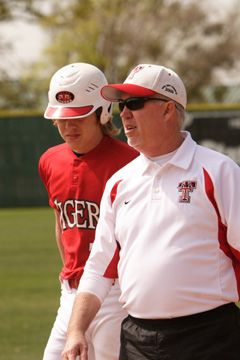 The sheer number of games that select teams play, not to mention the pressure to win, adds to the potential for injury — which could wipe out a kid’s chances for making good on all that “investment.” “My own personal opinion is that that’s way too many games to play at that age,” said Danny Wheat, the assistant athletic trainer for TCU baseball, who also spent 27 years as a trainer in the Rangers’ organization. “I’ve had doctors tell me that they’re seeing more overuse-type injuries in the younger kids now than they used to, simply because of programs like select baseball where they play year-round. It definitely takes a toll physically as well as mentally.” Pitchers, not surprisingly, are the most susceptible to injuries from overuse. The American Sports Medicine Institute (ASMI) recommends that pitchers younger than 15 not throw breaking pitches and not throw more than 600 pitches per season. A recent study found that 88 percent of college athletes who have had surgery to replace arm ligaments experienced overuse as youth baseball players. The researchers found that pitching for more than eight months per year increased the risk of injury by 500 percent.
The sheer number of games that select teams play, not to mention the pressure to win, adds to the potential for injury — which could wipe out a kid’s chances for making good on all that “investment.” “My own personal opinion is that that’s way too many games to play at that age,” said Danny Wheat, the assistant athletic trainer for TCU baseball, who also spent 27 years as a trainer in the Rangers’ organization. “I’ve had doctors tell me that they’re seeing more overuse-type injuries in the younger kids now than they used to, simply because of programs like select baseball where they play year-round. It definitely takes a toll physically as well as mentally.” Pitchers, not surprisingly, are the most susceptible to injuries from overuse. The American Sports Medicine Institute (ASMI) recommends that pitchers younger than 15 not throw breaking pitches and not throw more than 600 pitches per season. A recent study found that 88 percent of college athletes who have had surgery to replace arm ligaments experienced overuse as youth baseball players. The researchers found that pitching for more than eight months per year increased the risk of injury by 500 percent.
Ross Bailey, head athletic trainer at TCU, said that pitch counts for youth players are critical. “Bones grow from the ends outward. Typically we have muscles attaching to the ends of bones because the body is just a system of pulleys and levers,” he said. “When you’ve got those things attaching and you’re tugging on them, and you don’t have closed bone growth, the literature is pretty solid that you can have some long-term changes. Coach Taylor employs a strict pitch count on his players. “Right now, we are only letting them throw 40 pitches,” he said. “We’re not going to risk anyone for wins, it’s just not that important. … At a couple of points during the season, we take three to four weeks off.” Unfortunately for players like Ewing and his teammate Blake Perkins, who has also had arm problems due to overuse, some coaches are determined to win at any cost. Parents who keep their kids in select leagues despite those risks are taking more of the initiative to protect them. Ballard, for example, counts her son’s pitches.
The Tigers have literally grown up together. The friendships they have made and the bond that being on a travel team has created will likely leave an indelible mark on all of them. Both detractors and supporters of select say that it is important for kids to play with their friends, and that’s exactly what the Tigers are doing. Those friendships, of course, put even more pressure on parents who are having trouble paying for their kids’ involvement in the sport. As one mother put it, she would “beg, borrow, or steal the money” if she had to, in order to keep her son playing on the team. All of the parents interviewed for the story said that, given the chance, they would do select all over again. Taylor said that most kids in select baseball “really want to play this much … . Most of these kids are dedicated to baseball, and that’s all they want to do.” Taylor is also determined to shape the character of his players. Next weekend he is taking the team to the airport to welcome home troops from Iraq. The team also works with younger players, teaching them the fundamentals of the game.
However altruistic coaches like Taylor are, it is still money that drives these leagues. As he points out, there are a growing number of coaches whose income depends on winning. “As long as their programs are successful, that’s the way they will attract kids and get them in the door so that they can keep getting paid,” he said. After all the cost and time spent on baseball, a big part of select players’ childhoods get eaten up, a fact that is not lost on Ewing. “It’s given him a lot of responsibility,” she said. Trey “had to learn to manage school and baseball. The coaches expect him to take it more seriously, and he sees how much money and time we put into it. He understands when we’ve just traveled hundreds of miles to play in a tournament. I think they do try a lot harder, and they’re really putting their hearts in it to win.” The kids aren’t the only ones putting their hearts into it. “I just wouldn’t want to let him down,” she said. “I couldn’t tell him ‘I’m sorry you can’t play on this team.’ I would probably do just about anything … and I do.”
You can reach Eric Griffey at eric.griffey@fwweekly.com.











